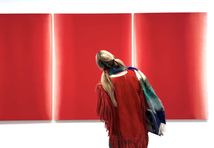Architecture Week: Placing Chandigarh
- The Courtauldian
- Jul 18, 2017
- 1 min read
Chandigarh (after ‘Chandi Mandir’, a Hindu temple located nearby) is the capital of two states, Punjab and Haryana. Jawaharlal Nehru envisaged a new city which architecturally and politically departed from the past – a break from classical and colonial styles. Le Corbusier steered the design of the city, accompanied by European architects working under the same modernist rubric, including Pierre Jeanneret, Maxwell Fry and Jane Drew. Efforts to train Indian students according to this architectural modernism also ensured the longevity of the style in the region.
In a city which erased the possibilities for nostalgia by looking to the future, a seamless integration between forced migrants and the built environment was not possible. Indeed, Corbusier’s Eurocentric architectural ideals of open space and large gardens did not suit the migrants’ experiences of domesticity; neighbourliness, once audible and comforting, had vanished. In a city which aimed to remedy the post-Partition Lahore void in India, feelings of disconnect between individuals and the new built environment amplified – an apt reminder as this year marks the 70th anniversary of India's Partition.
Today, Chandigarh magnetises wonder and fascination both within and outside of India. It attracts a vibrant student community, primarily due to the prestigious university occupying the north. It currently has one of the highest tree-covers in the country, a topography secured through tightly maintained green belts. And it has also inspired social commentary, ranging from short films featuring John Berger and Jarvis Cocker, to artistic responses by Shezad Dawood.
The following compilation of photographs draws upon the various written and visual responses, exploring how the natural, artificial and human interweave in contemporary Chandigarh.




































Comments